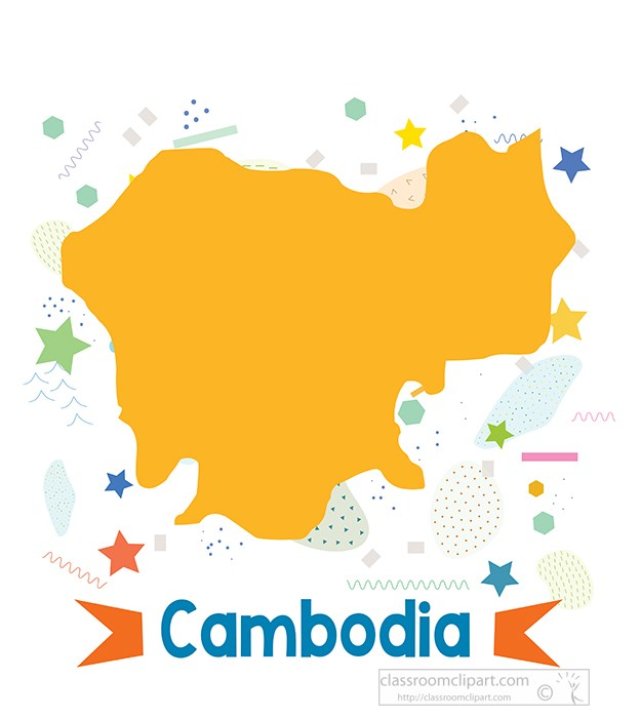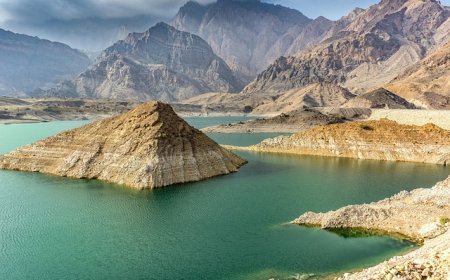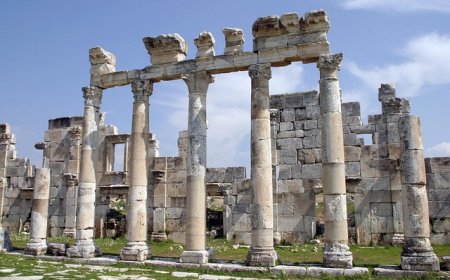Cambodia for Students: Geography, Culture, and History of Angkor and Beyond
Discover Cambodia for kids. Learn about Angkor Wat, rainforests, and Khmer culture. Includes fun facts, vocabulary words, and a quiz.

🇰🇭 Cambodia: Land of Temples, Rivers, and Resilience
Introduction
Cambodia is a country in Southeast Asia known for its rich history, lush landscapes, and the breathtaking temple of Angkor Wat—one of the largest religious monuments in the world. It’s a land of rice fields, rivers, and rainforest, where traditions remain strong even after years of hardship. Cambodia is rebuilding and growing while honoring its past and sharing its culture with the world.
Geography and Landscape
Cambodia is located on the southern part of the Indochina Peninsula, bordered by Thailand, Laos, Vietnam, and the Gulf of Thailand. Most of the country is covered by flat plains, forests, and rice paddies. In the center lies Tonlé Sap, the largest freshwater lake in Southeast Asia, which expands and shrinks with the seasons.
The Mekong River, one of Asia’s greatest rivers, flows through the country and provides fish, water, and transport. The Cardamom Mountains and Dangrek Range form natural borders, and forests in these areas are home to rare plants and animals.
Cambodia has a tropical climate with a rainy season (May to October) and a dry season (November to April). Farmers depend on the rains to grow rice, the country’s most important crop.
Cities and Regions
The capital and largest city is Phnom Penh, located at the meeting of three rivers, including the Mekong. Once known as the “Pearl of Asia,” Phnom Penh is now a busy city filled with markets, temples, and monuments.
Other important places include:
- Siem Reap – the gateway to Angkor Wat and ancient Khmer ruins
- Battambang – known for traditional arts, rice farming, and colonial architecture
- Sihanoukville – a coastal city with beaches and a growing port
Most Cambodians live in villages or small towns where life centers around farming, family, and religious festivals.
People, Language, and Culture
Cambodia has about 17 million people, and most belong to the Khmer ethnic group, who have lived in the region for over a thousand years. The official language is Khmer, and the main religion is Theravāda Buddhism, practiced by about 95% of the population.
Monks in saffron robes are a common sight in cities and villages, and pagodas (temples) are at the heart of community life.
Cambodians are known for their:
- Traditional music and dance, including the graceful apsara dance
- Handicrafts, such as silk weaving, stone carving, and silverwork
- Festivals, like Khmer New Year (Chaul Chnam Thmey) and Pchum Ben, honoring ancestors
Family is very important in Cambodian culture, and younger generations often care for their elders.
Food and Daily Life
Cambodian food is flavorful, fresh, and usually made with rice or noodles, vegetables, herbs, and fish. Popular dishes include:
- Amok – a creamy curry made with fish and coconut milk, often steamed in banana leaves
- Bai sach chrouk – grilled pork served with rice for breakfast
- Lok lak – stir-fried beef served with pepper-lime sauce
- Num banh chok – a noodle soup with fish gravy and fresh greens
Tonlé Sap Lake provides a rich supply of fish, making Cambodia one of the world’s top fish-consuming countries.
Children attend primary school, and education is improving after past struggles. In rural areas, children often help with farming and chores, but schools are growing in number and quality across the country.
History of Cambodia
Cambodia’s history stretches back thousands of years. The Khmer Empire, from the 9th to the 15th century, was one of the most powerful empires in Southeast Asia. Its capital, Angkor, was home to a million people and stunning temples, the most famous being Angkor Wat.
In the 1800s, Cambodia became a French colony and remained under French rule until independence in 1953.
The country suffered a terrible time during the Khmer Rouge regime (1975–1979), when millions of people died in one of the world’s worst genocides. Many teachers, artists, and scholars were killed, and much of the country’s heritage was destroyed.
Since then, Cambodia has made progress toward peace and rebuilding. Tourism, farming, and manufacturing are growing, and young Cambodians are working to preserve their culture and improve their country’s future.
Nature and Wildlife
Cambodia has tropical forests, rivers, and wetlands filled with diverse plants and animals. Wildlife includes:
- Asian elephants
- Clouded leopards
- Gibbons (a type of monkey)
- Iridescent fish and water birds in Tonlé Sap Lake
Protected areas like Botum Sakor National Park help safeguard endangered species and natural habitats. But deforestation and climate change are ongoing challenges for conservation.
Vocabulary List
| Word | Definition |
|---|---|
| Khmer | The main ethnic group and language of Cambodia |
| Angkor Wat | A huge temple complex and symbol of Cambodian culture |
| Monsoon | Seasonal winds that bring heavy rain to Southeast Asia |
| Pagoda | A Buddhist temple, often with a pointed roof |
| Theravāda Buddhism | A branch of Buddhism practiced mostly in Southeast Asia |
| Apsara dance | A classical Cambodian dance with slow, graceful movements |
| Amok | A Cambodian fish curry steamed in banana leaves |
| Genocide | A large-scale killing of a group of people |
👧🧒 Kid-Friendly Summary
Cambodia is a country in Southeast Asia with rainforests, rivers, and ancient temples like Angkor Wat. Most people are Khmer and follow Buddhism. They enjoy rice dishes, dances, and celebrating New Year in April.
The country has had hard times, but it’s rebuilding and growing stronger. Cambodia is full of kind people, beautiful places, and amazing history to explore!
🧠 Interactive Quiz: What Do You Know About Cambodia?
1. What is the capital of Cambodia?
A) Siem Reap
B) Phnom Penh
C) Bangkok
D) Hanoi
2. What is Angkor Wat?
A) A national dish
B) A river
C) A temple complex
D) A mountain
3. What is the main religion in Cambodia?
A) Christianity
B) Buddhism
C) Islam
D) Hinduism
4. What is the name of Cambodia’s largest lake?
A) Mekong
B) Tonlé Sap
C) Inle
D) Lake Victoria
5. What type of dance is famous in Cambodia?
A) Ballet
B) Breakdancing
C) Apsara dance
D) Tap dance
6. What happened under the Khmer Rouge?
A) A sports tournament
B) A major festival
C) A genocide
D) A celebration
7. What is a pagoda?
A) A shopping center
B) A Buddhist temple
C) A city square
D) A school
8. What dish is made with fish and coconut milk?
A) Amok
B) Pho
C) Sushi
D) Hamburger



















































